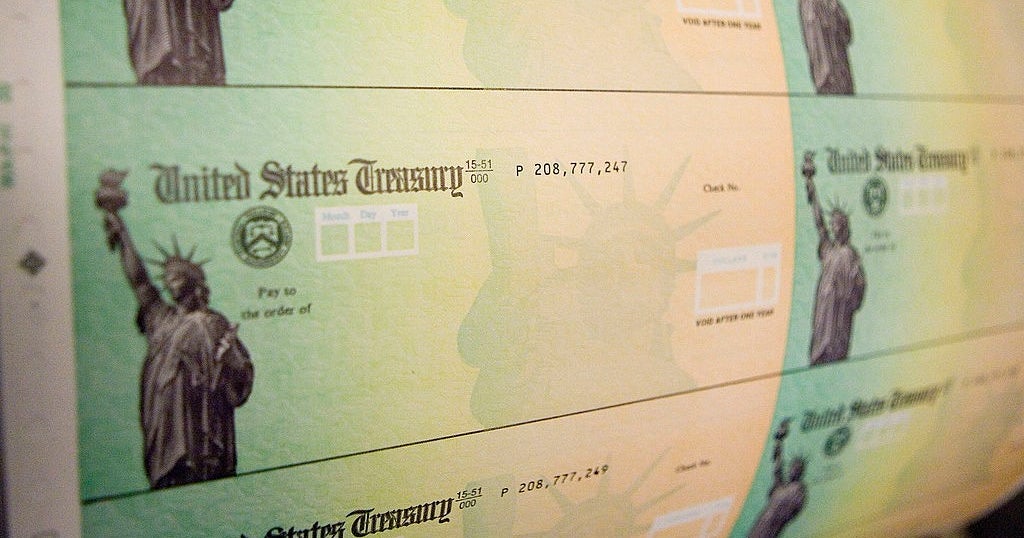3 reasons the U.S. economy isn't set to fall off a cliff
- Declining U.S. and global economic growth, financial market turmoil and geopolitical tensions are fueling fears of an approaching recession.
- But Wall Street analysts say such concerns are overblown, with most economists only predicting a U.S. slowdown rather than a prolonged slump.
- The biggest threat to the American economy may be the escalating conflict between the U.S. and China.
Recession fears in the U.S. are back with a vengeance—cue the blaring headlines, woozy stock markets and ominous-sounding economic signals pointing toward the abyss. But what if the ill omens are wrong?
First, let's recap what's making people jittery. Most important, U.S. economic growth has fallen sharply, from over 3% in the first three months of the year to roughly 2%—a pace of expansion many economists consider the new normal following the 2008 financial crisis. The manufacturing sector looks particularly weak, and may already be in recession. And any spark the economy got last year from the Republican party's massive tax cuts is starting to dim.
Compounding—and potentially supersizing—those problems is the Trump administration's festering trade fight with China. Most Wall Street analysts see no obvious off-ramps in the conflict and expect it to continue at least through the 2020 presidential election, if not longer. China's move earlier this month to allow its currency to depreciate—bringing shrieks of currency manipulation from President Donald Trump—has opened a new front.
Since May, meanwhile, investors have been fixated on the dreaded "inverted yield curve"—historically, a precursor to many recessions that occurs when returns on long-term U.S. Treasury bonds fall below those on shorter-term debt.
That's the scary news, and it shouldn't be dismissed lightly. Yet there are good reasons to believe the economy, while not firing on all cylinders, isn't on the verge of a breakdown.
The economy is cooling, not freezing up
Most independent forecasters, along with the Federal Reserve, expect economic growth to trundle along at an annualized rate of around 2% the rest of the year and into 2020. Hiring around the country has slowed, but remains well above the level required to keep unemployment near a 50-year low. Other key gauges of the economy's health, such as jobless claims and constructions permits, show no signs of an approaching economic crunch, according to Capital Economics.
Stocks are holding up
Financial markets have gyrated wildly this year as investors fret about trade tensions and slowing global growth. But stocks haven't cratered—in fact, the S&P 500 is up more than 16% this year and remains only 3.3% off the all-time high the benchmark index notched in late July.
The Dow has gained 13%, while the Nasdaq—which includes many technology companies that are particularly exposed to the U.S.-China trade war—has added 20%. And while trading is likely to remain volatile, many analysts expect equities to keep rising. Citing the latest batch of corporate earnings, Goldman Sachs on Monday predicted that the S&P 500 will rise an additional 7% this year.
So what about that yield curve?
The thing to understand about an inverted yield curve is that it's a warning sign, not a foregone conclusion. In recent decades, an inversion has preceded most—but not all—recessions. After three of the last 10 inversions, the U.S. economy continued to grow over the next two years, UBS economists note. And when recessions have followed an inversion, it's taken an average of 21 months for recessions to start.
"We would caution against seeing the inversion of the yield curve as an infallible predictor of an economic contraction or a bear market," Michael Ryan, Chief Investment Officer Americas at UBS, and Mark Haefele, the investment bank's Global Chief Investment Officer, said in a report. "We believe that recession fears are overdone, but investors should prepare for a more sustained period of lower interest rates."
So can consumers breath a sigh of relief? Well, not quite. For one thing, consumers themselves seem to be growing more apprehensive judging from the latest confidence measures investors track to forecast growth. That mood can be self-fulfilling, leading individuals to abruptly curb spending and businesses to stop investing. With consumers accounting for some 70% of economic activity, a continued erosion in confidence could slam the economy.
Watch this space
Perhaps the biggest wild card: trade. Although the White House last week delayed slapping new tariffs on China, the Trump administration is widely expected to proceed with the levies, with neither the U.S. nor China signaling a willingness to back down. Although the toll on Americans so far has been contained, economists warn that a deepening rift between the world's economic superpowers could trigger recession.
On that front, something to watch is the Trump administration's linkage of foreign policy to its trade feud with China. Mr. Trump's approval this month of a deal to sell F-16 fighter jets to Taiwan is prompting threats of retaliation from China. And while the White House's response to the Hong Kong protests so far has been mild, the situation remains a pressure cooker. It's unclear how Mr. Trump would respond if Chinese forces cracked down on protesters, especially given that many Hong Kongers have U.S. passports.
An "intervention that turned ugly would therefore be an even bigger shock to the global system than the Lehman Brothers bankruptcy, in that Western nations and Western corporates would feel compelled rapidly to disengage from China," Louis Gave, CEO of investor advisory firm Gavekal Research, told clients in a note. "The era of globalization would well and truly be over."



